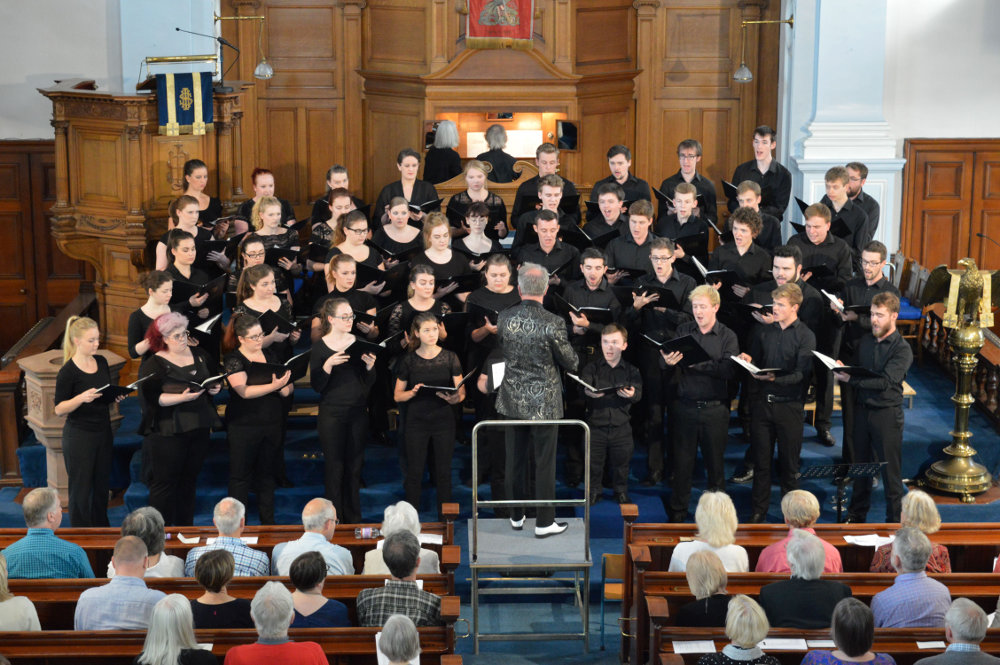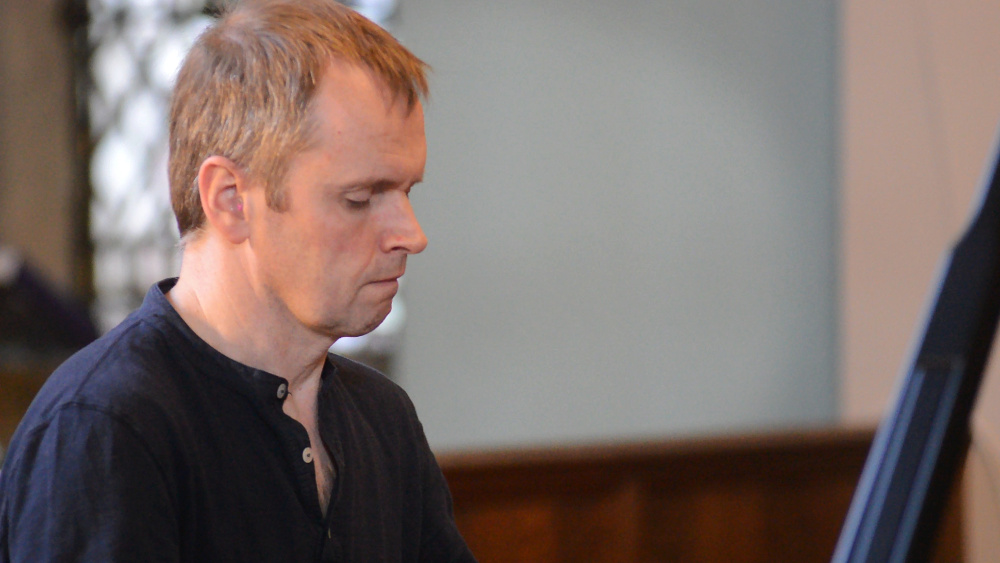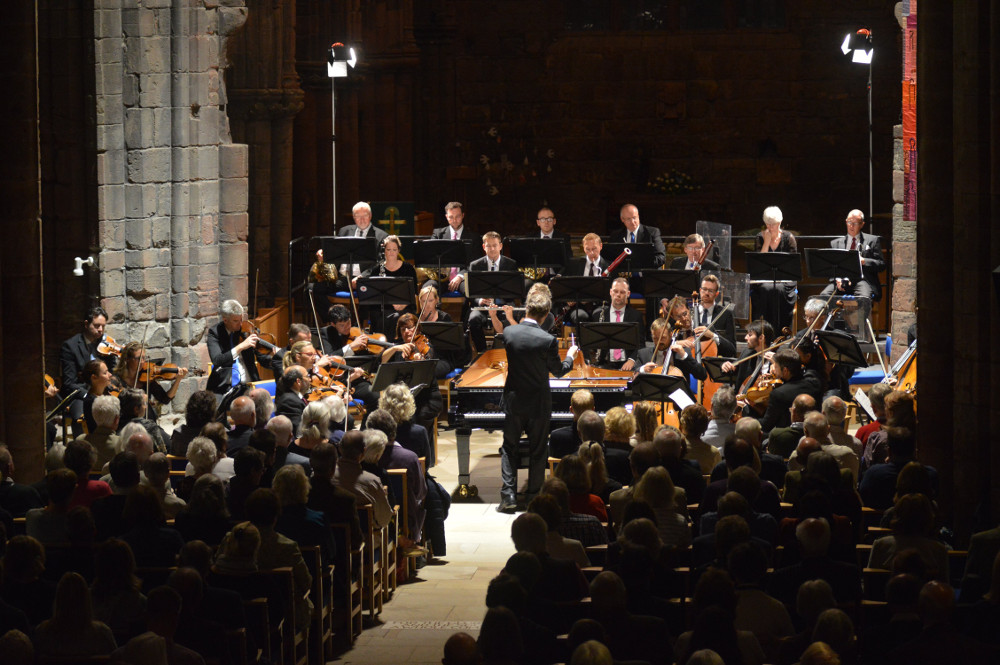Lammermuir Festival 2016, East Lothian | reviews, news & interviews
Lammermuir Festival 2016, East Lothian
Lammermuir Festival 2016, East Lothian
Biggest and boldest event yet for Scotland's early autumn musical harvest

It’s just a short trip down the A1 from Edinburgh. But East Lothian – with its big skies, wide-open spaces, empty beaches and seemingly inexhaustable supply of quaint, historic villages – feels like a long, long way from the Scottish capital.
The East Lothian festival takes its name from the surprisingly wild Lammermuir Hills that hem in its village venues against the Firth of Forth coast, and 2016 was its seventh year – once perhaps one of the UK’s hidden gems of music festivals, it now feels like it’s well outgrown that description, with a bold, ambitious programme that was bigger than ever before, and substantial audiences flocking from throughout Scotland, northern England and much further afield too.
You could hear every one of the Marian Consort’s sextet of voices individually Festival directors James Waters and Hugh Macdonald put the region’s richness of small-scale, interesting venues to very good use. Like, for instance, Lennoxlove House, home to the Dukes of Hamilton, whose magnificent Great Hall dates right back to the 14th century – three centuries earlier, joked the Marian Consort’s director Rory McCleery, than the music they were there to sing in a quietly spectacular morning recital on the festival’s opening weekend.
And that music was some of the glorious Catholic choral works of William Byrd, kept secret in furiously Protestant England in the 16th and 17th centuries. With its barrel-vaulted ceiling and bare stone walls, Lennoxlove’s intimate Great Hall, with a capacity audience crammed into every corner, provided an appropriately evocative, hidden-away setting for their performance – and a fascinating acoustic, too, both intimate and imposing. You could hear every one of the Marian Consort’s sextet of voices individually throughout their recital – the blend was superb, but they didn’t aim for the super-smooth vocal purity of other groups. Instead, it was a carefully maintained balance between corporate gloss and distinctive individuality that made their accounts fresh and alive.
They took care, too, over their vocal doublings in Byrd’s Mass for Four Voices, bringing constantly shifting degrees of richness across their six voices, and they closed with spirited, dancing filigree in his joyful Venite, exultemus Domino. And though there might have been a little too much gore in McCleery’s descriptions of anti-Catholic persecution, his commentaries nevertheless provided an effective contrast to the poised serenity of ensemble’s supple, fluid singing.
 There was more singing the following weekend, from the National Youth Choir of Scotland (pictured above) under founding conductor Christopher Bell, this time in the broader expanse of St Michael’s Church, Inveresk, on the outskirts of Edinburgh itself. With singers aged 16 to 25, driven, committed and eager to share, NYCoS can put many choirs of older singers firmly in the shade – especially in repertoire that they know intimately, which is what they brought to their Lammermuir concert.
There was more singing the following weekend, from the National Youth Choir of Scotland (pictured above) under founding conductor Christopher Bell, this time in the broader expanse of St Michael’s Church, Inveresk, on the outskirts of Edinburgh itself. With singers aged 16 to 25, driven, committed and eager to share, NYCoS can put many choirs of older singers firmly in the shade – especially in repertoire that they know intimately, which is what they brought to their Lammermuir concert.
James MacMillan’s 1990 Cantos Sagrados doesn’t pull any punches in its forthright depictions of murders, disappearances and executions under the Argentinian junta, and the NYCoS singers gave a blistering, white-hot account, from the stuttering shock of the opening movement and its discovery of a body washed up by the river, through to horrifying radiance in the closing scene of a magical, transcendental execution.
They followed it with more vivid picture-painting, although of a far softer kind, in Eric Whitacre’s Leonardo Dreams of his Flying Machine, in a performance so theatrical that it made even MacMillan’s Cantos Sagrados seem restrained. If their concert closer – Vivaldi’s Gloria – felt more everyday, that was more a mark of the angst and wonder that had preceded it, rather than the fine, glowingly detailed performance itself.
 Scottish pianist Steven Osborne (pictured above) is the Lammermuir Festival’s patron, and a regular performer at the event too, and his evening recital amid the homespun Arts and Crafts splendour of Chalmers Memorial Church, Port Seton, was a typically intelligent offering. He devoted the first half to Debussy, with playing that was high on classical elegance and precision, though interestingly low on pastel-hued opulence – from considered storytelling in a tender Children’s Corner through to a controlled sense of fantasy in L’isle joyeuse, each piece crisp, unfussy, vividly characterised and unafraid to sparkle.
Scottish pianist Steven Osborne (pictured above) is the Lammermuir Festival’s patron, and a regular performer at the event too, and his evening recital amid the homespun Arts and Crafts splendour of Chalmers Memorial Church, Port Seton, was a typically intelligent offering. He devoted the first half to Debussy, with playing that was high on classical elegance and precision, though interestingly low on pastel-hued opulence – from considered storytelling in a tender Children’s Corner through to a controlled sense of fantasy in L’isle joyeuse, each piece crisp, unfussy, vividly characterised and unafraid to sparkle.
It set just the right tone for his concert’s second half, when Osborne went back in time to an earlier collection of vivid musical images. He took quite a propulsive ride through Mussorgsky’s Pictures at an Exhibition, seeming to skip nimbly from painting to painting in eager ‘Promenade’ movements, from a violent, shrieking ‘Baba Yaga’ to a wonderfully noble ‘Great Gate of Kiev’ in which he revealed a tonal palette to his piano that we hadn’t heard before – strong, sustained, lit from within.
 For the festival’s closing concert, the Royal Northern Sinfonia had travelled north from Gateshead across the border for a concert in the expansive grandeur of St Mary’s Church, Haddington, under music director Lars Vogt (pictured above). There was plenty to admire in their dance-suffused programme – not least a fizzing Kodály Dances from Galánta, which Vogt rather disconcertingly directed standing in front of his piano, score laid across its music stand, and an exquisitely refined Mozart Piano Concerto No. 27.
For the festival’s closing concert, the Royal Northern Sinfonia had travelled north from Gateshead across the border for a concert in the expansive grandeur of St Mary’s Church, Haddington, under music director Lars Vogt (pictured above). There was plenty to admire in their dance-suffused programme – not least a fizzing Kodály Dances from Galánta, which Vogt rather disconcertingly directed standing in front of his piano, score laid across its music stand, and an exquisitely refined Mozart Piano Concerto No. 27.
But Vogt’s Mozart also seemed quite determined, rather light on wit and effervescence, and his Beethoven Seventh Symphony, though urgent, also felt somewhat lacking in dramatic intention – despite a light-footed slow movement that still managed to unfold majestically. Nevertheless, the concert revealed a fruitful, probing relationship between the orchestra and its music director of just a year – and made for a suitably grand, incisive conclusion to what had been Lammermuir’s biggest, most ambitious and most gratifying festival to date.
The future of Arts Journalism
You can stop theartsdesk.com closing!
We urgently need financing to survive. Our fundraising drive has thus far raised £49,000 but we need to reach £100,000 or we will be forced to close. Please contribute here: https://gofund.me/c3f6033d
And if you can forward this information to anyone who might assist, we’d be grateful.

Subscribe to theartsdesk.com
Thank you for continuing to read our work on theartsdesk.com. For unlimited access to every article in its entirety, including our archive of more than 15,000 pieces, we're asking for £5 per month or £40 per year. We feel it's a very good deal, and hope you do too.
To take a subscription now simply click here.
And if you're looking for that extra gift for a friend or family member, why not treat them to a theartsdesk.com gift subscription?
more Classical music
 Kilsby, Parkes, Sinfonia of London, Wilson, Barbican review - string things zing and sing in expert hands
British masterpieces for strings plus other-worldly tenor and horn - and a muscular rarity
Kilsby, Parkes, Sinfonia of London, Wilson, Barbican review - string things zing and sing in expert hands
British masterpieces for strings plus other-worldly tenor and horn - and a muscular rarity
 From Historical to Hip-Hop, Classically Black Music Festival, Kings Place review - a cluster of impressive stars for the future
From quasi-Mozartian elegance to the gritty humour of a kitchen inspection
From Historical to Hip-Hop, Classically Black Music Festival, Kings Place review - a cluster of impressive stars for the future
From quasi-Mozartian elegance to the gritty humour of a kitchen inspection
 Shibe, LSO, Adès, Barbican review - gaudy and glorious new music alongside serene Sibelius
Adès’s passion makes persuasive case for the music he loves, both new and old
Shibe, LSO, Adès, Barbican review - gaudy and glorious new music alongside serene Sibelius
Adès’s passion makes persuasive case for the music he loves, both new and old
 Anja Mittermüller, Richard Fu, Wigmore Hall review - a glorious hall debut
The Austrian mezzo shines - at the age of 22
Anja Mittermüller, Richard Fu, Wigmore Hall review - a glorious hall debut
The Austrian mezzo shines - at the age of 22
 First Person: clarinettist Oliver Pashley on the new horizons of The Hermes Experiment's latest album
Compositions by members of this unusual quartet feature for the first time
First Person: clarinettist Oliver Pashley on the new horizons of The Hermes Experiment's latest album
Compositions by members of this unusual quartet feature for the first time
 Gesualdo Passione, Les Arts Florissants, Amala Dior Company, Barbican review - inspired collaboration excavates the music's humanity
At times it was like watching an anarchic religious procession
Gesualdo Passione, Les Arts Florissants, Amala Dior Company, Barbican review - inspired collaboration excavates the music's humanity
At times it was like watching an anarchic religious procession
 Classical CDs: Camels, concrete and cabaret
An influential American composer's 90th birthday box, plus British piano concertos and a father-and-son duo
Classical CDs: Camels, concrete and cabaret
An influential American composer's 90th birthday box, plus British piano concertos and a father-and-son duo
 Cockerham, Manchester Camerata, Sheen, Martin Harris Centre, Manchester review - re-enacting the dawn of modernism
Two UK premieres added to three miniatures from a seminal event of January 1914
Cockerham, Manchester Camerata, Sheen, Martin Harris Centre, Manchester review - re-enacting the dawn of modernism
Two UK premieres added to three miniatures from a seminal event of January 1914
 Kempf, Brno Philharmonic, Davies, Bridgewater Hall, Manchester review - European tradition meets American jazz
Bouncing Czechs enjoy their Gershwin and Brubeck alongside Janáček and Dvořák
Kempf, Brno Philharmonic, Davies, Bridgewater Hall, Manchester review - European tradition meets American jazz
Bouncing Czechs enjoy their Gershwin and Brubeck alongside Janáček and Dvořák
 Solomon, OAE, Butt, QEH review - daft Biblical whitewashing with great choruses
Even a top soprano and mezzo can’t make this Handel paean wholly convincing
Solomon, OAE, Butt, QEH review - daft Biblical whitewashing with great choruses
Even a top soprano and mezzo can’t make this Handel paean wholly convincing
 Two-Piano Gala, Kings Place review - shining constellations
London Piano Festival curators and illustrious friends entertain and enlighten
Two-Piano Gala, Kings Place review - shining constellations
London Piano Festival curators and illustrious friends entertain and enlighten
 Echo Vocal Ensemble, Latto, Union Chapel review - eclectic choral programme garlanded with dance
Beautiful singing at the heart of an imaginative and stylistically varied concert
Echo Vocal Ensemble, Latto, Union Chapel review - eclectic choral programme garlanded with dance
Beautiful singing at the heart of an imaginative and stylistically varied concert

Add comment